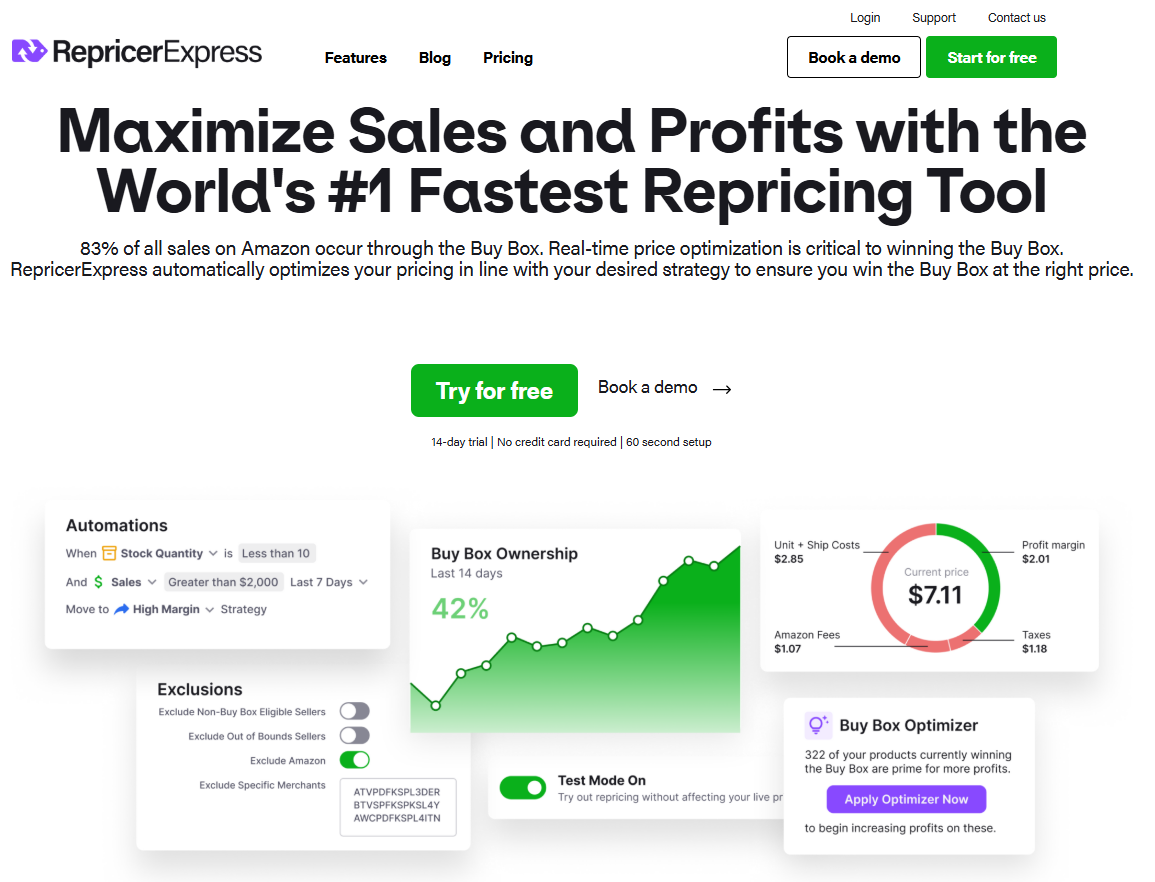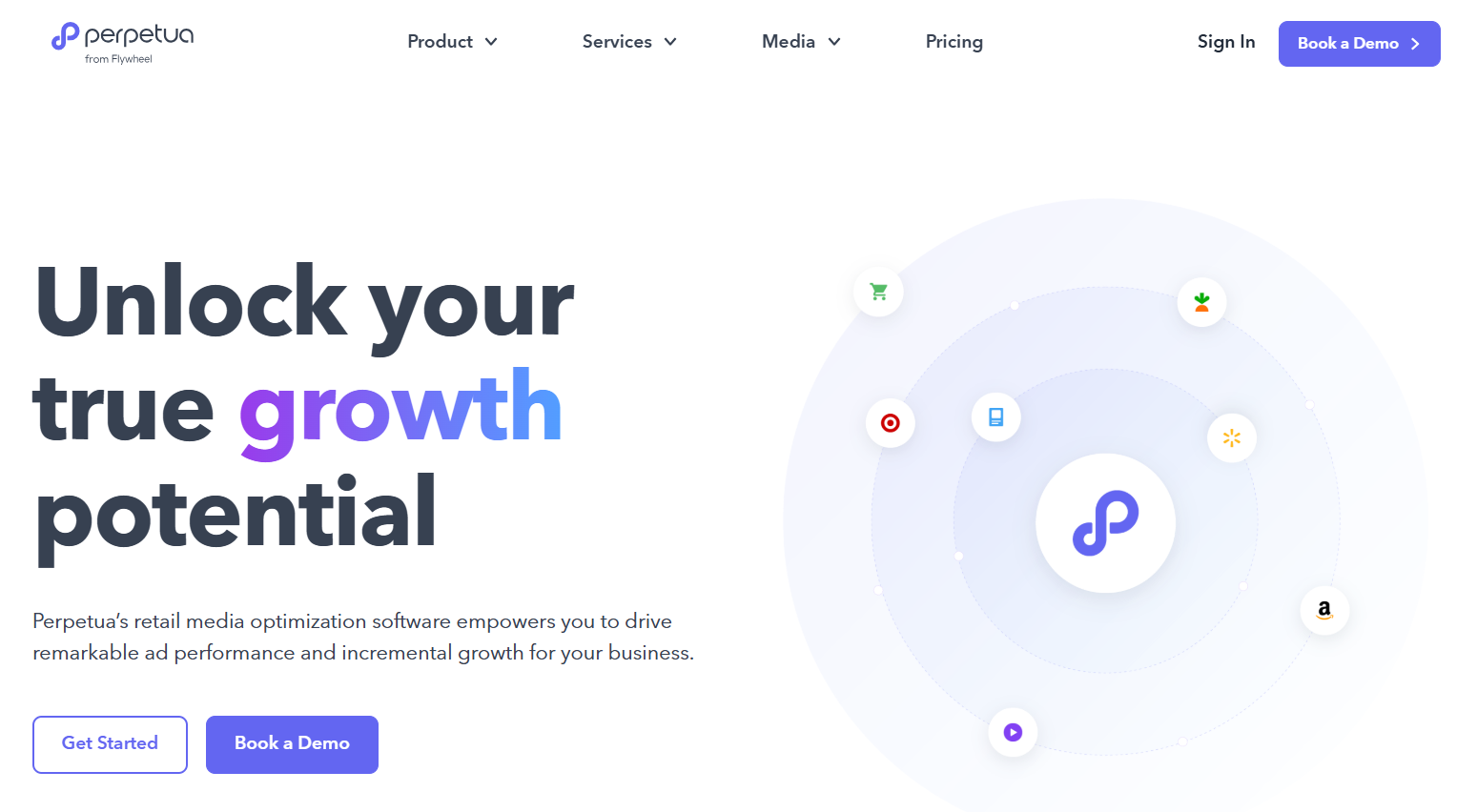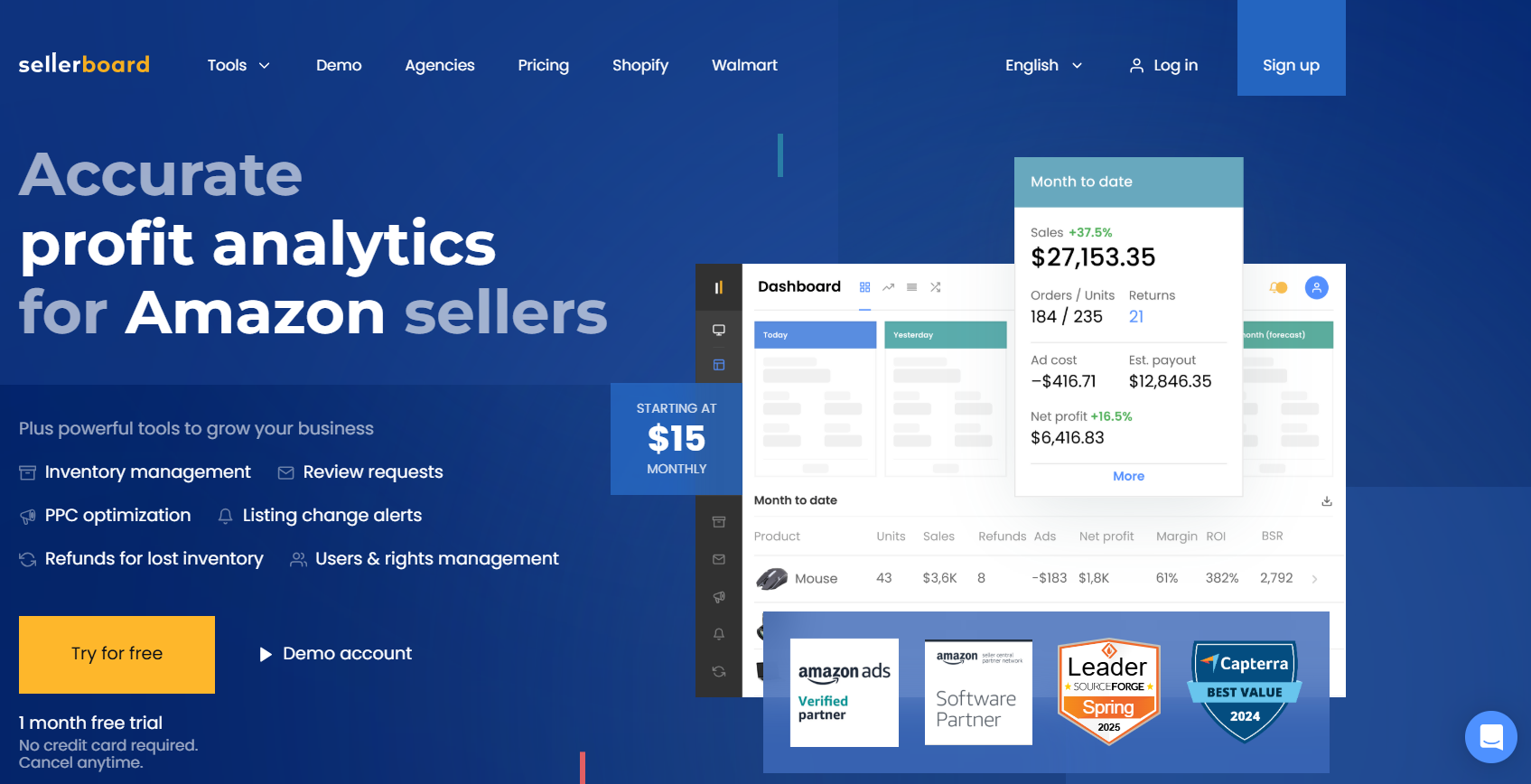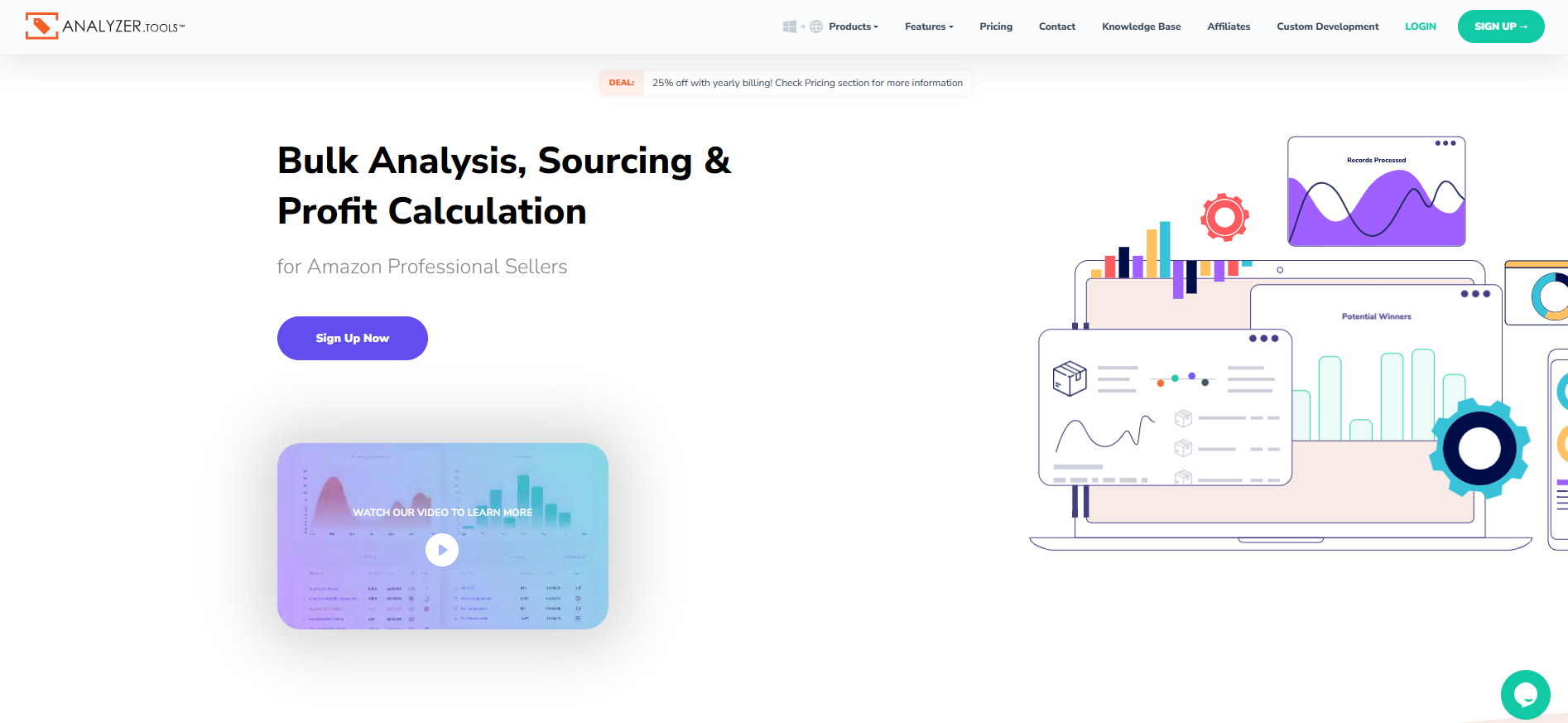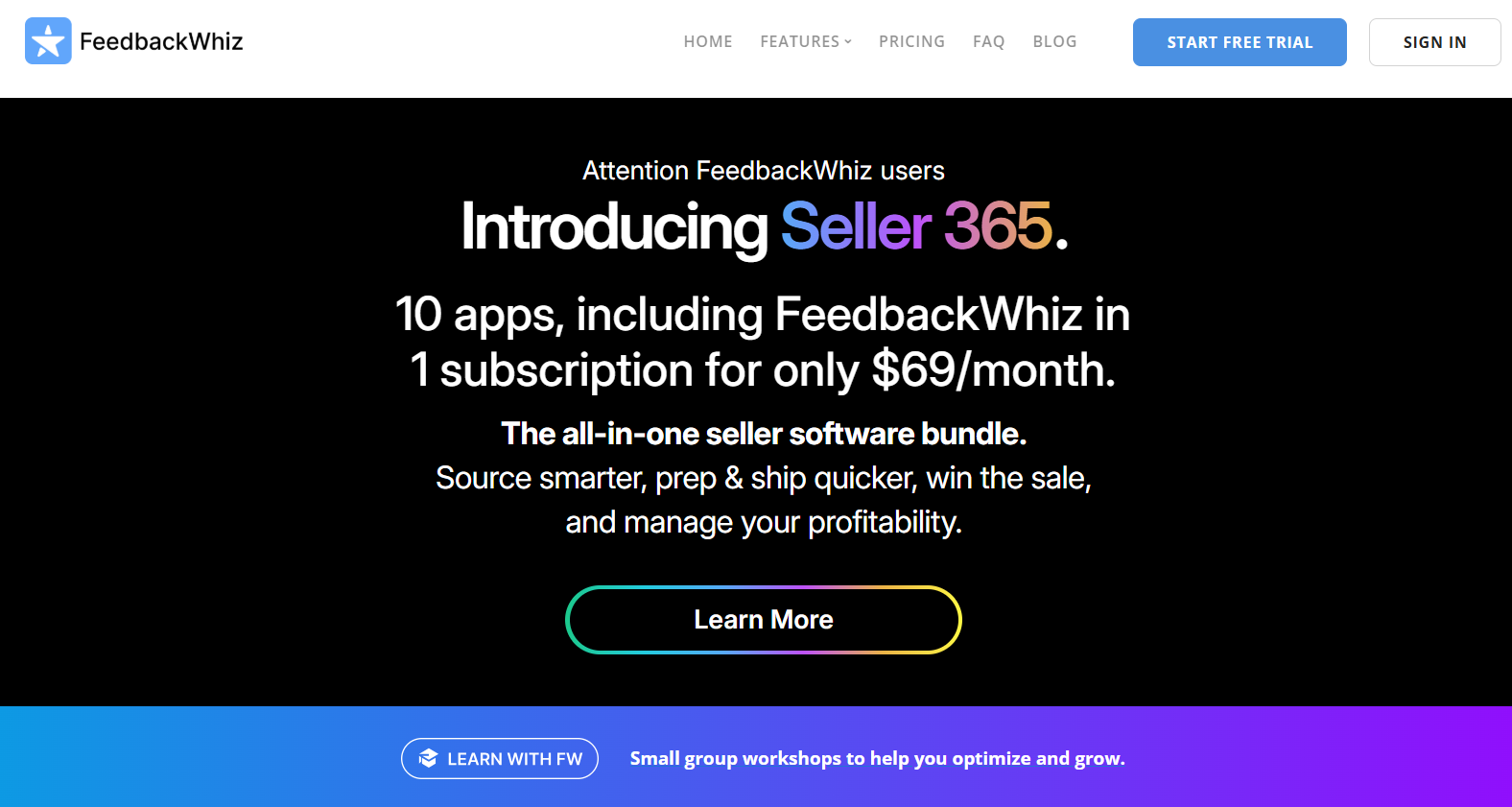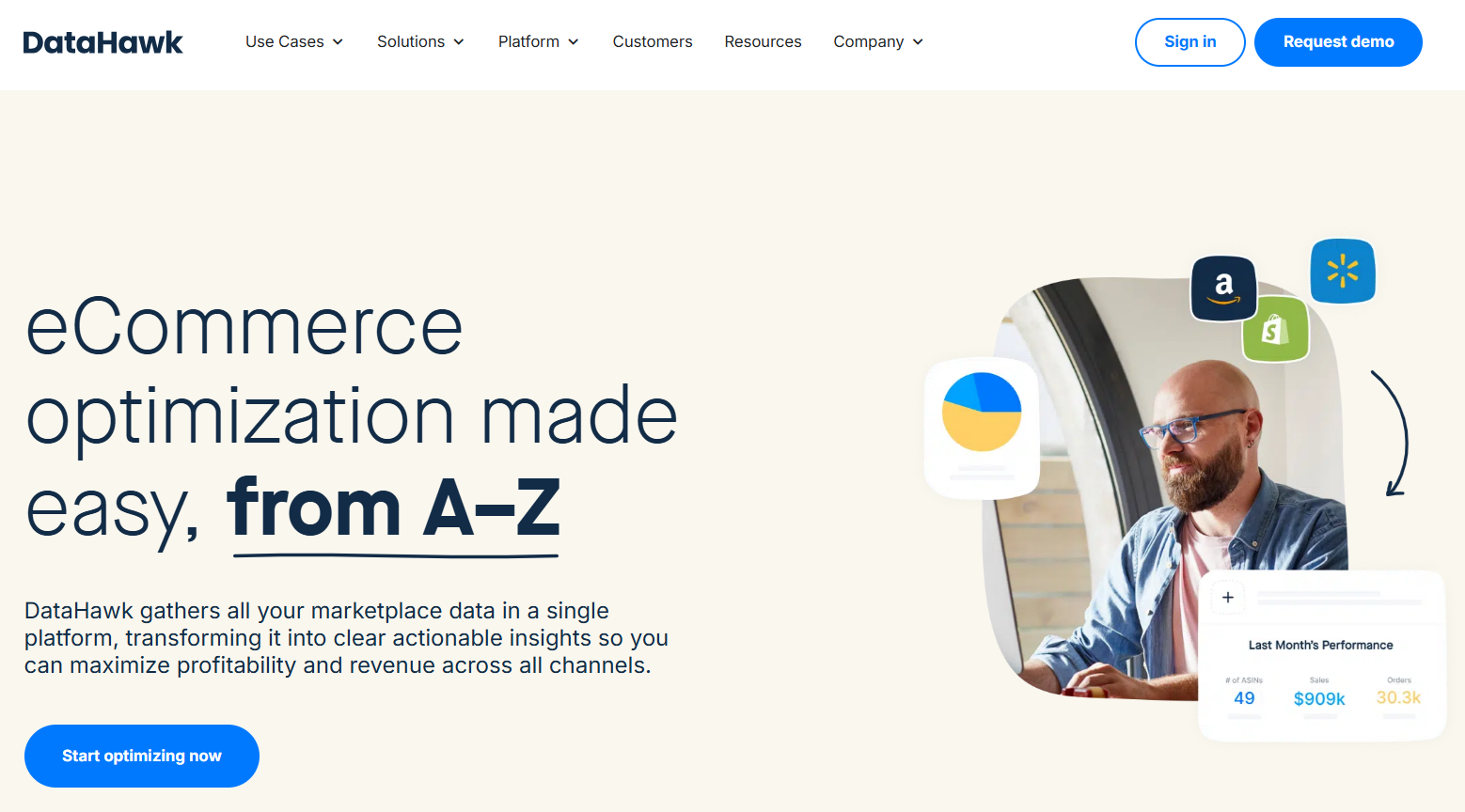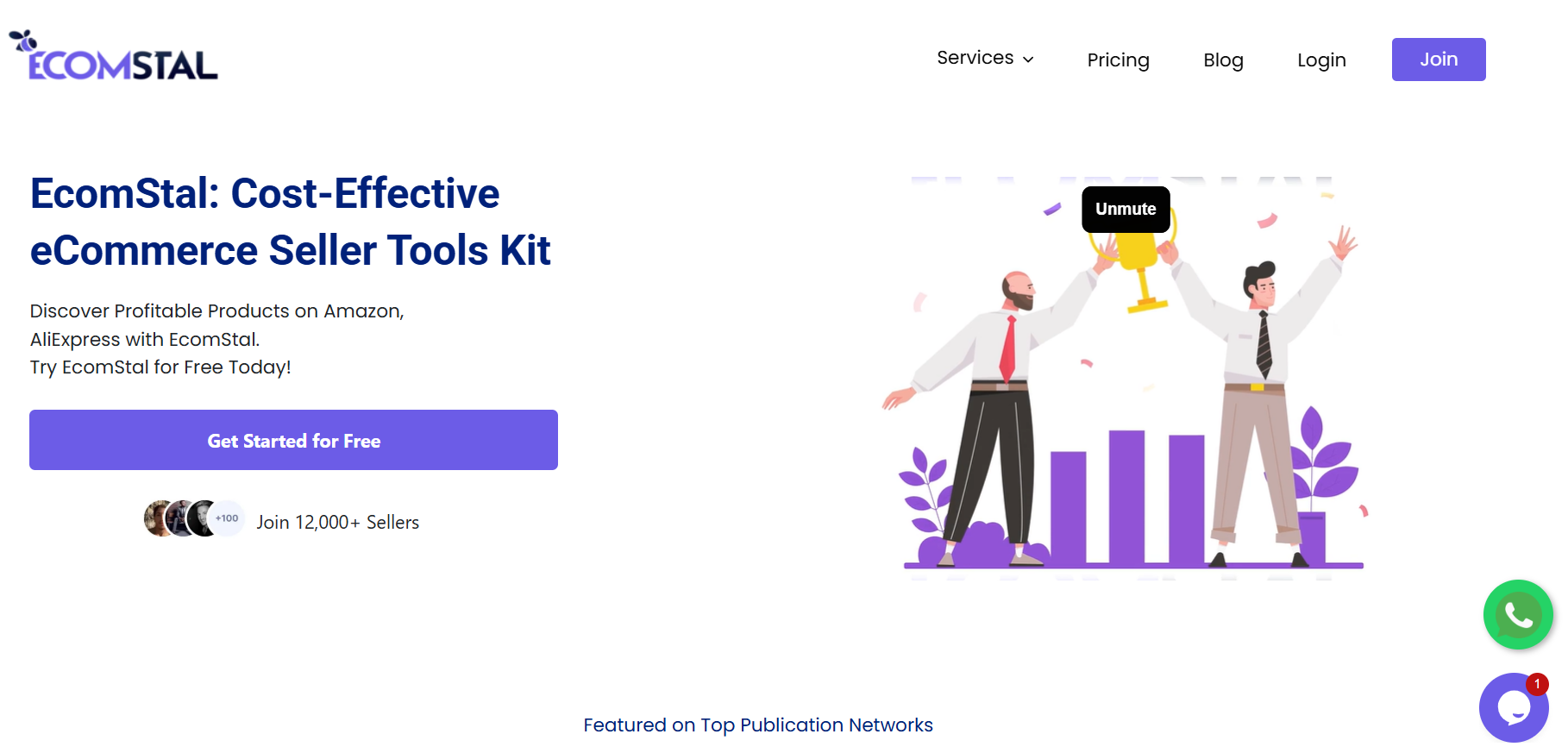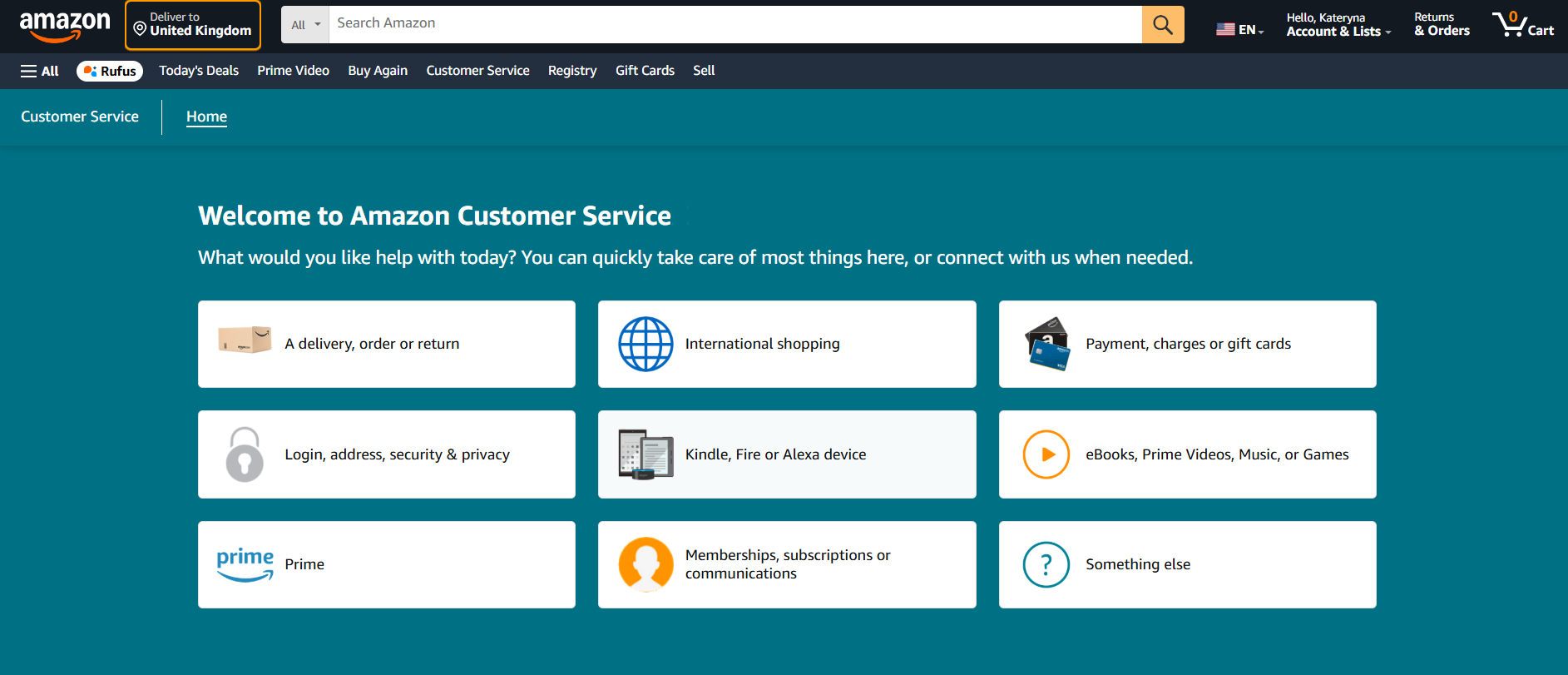Managing an Amazon business requires tools to handle product research, keyword tracking, and advertising. SellerApp offers a suite of features for these tasks, but other platforms provide similar functionality tailored to different seller needs. This article covers alternatives to SellerApp, focusing on their tools and services to help you choose the right fit for your e-commerce operations.
1. WisePPC
We provide a toolkit for companies selling on Amazon and other marketplaces. Our platform focuses on analytics to track sales and advertising performance. It includes features for monitoring real-time data, historical trends, and campaign management. Clients can use our tools to analyze metrics like cost-per-click, ad spend, and conversion rates, with options to filter and segment data for detailed insights.
Our system allows sellers to make bulk changes to campaigns, ad groups, or targets with a few clicks. It also stores long-term historical data, unlike Amazon’s 60-90 day retention. Features like placement performance analysis and on-spot campaign editing are available to adjust bids and budgets directly. Upcoming tools include automated inventory forecasting and AI-based campaign adjustments for clients.
Key Highlights
- Toolkit designed for Amazon and Shopify sellers.
- Stores historical data beyond Amazon’s retention period.
- Supports bulk campaign updates for efficiency.
Services
- Real-time sales and ad performance tracking.
- Historical data analysis with customizable charts.
- Bulk campaign management and optimization.
- Placement performance analysis for ad strategies.
- Automated inventory forecasting (in development).
Contact and Social Media Information
- Website: wiseppc.com
- Facebook: www.facebook.com/wiseppc
- LinkedIn: www.linkedin.com/company/wiseppc
- Instagram: www.instagram.com/wiseppc
2. Helium 10
Helium 10 provides tools for Amazon and e-commerce sellers to manage their businesses. The platform includes features for product research, keyword analysis, and advertising management. It integrates with Amazon, Walmart, and TikTok Shop, allowing sellers to track performance across multiple marketplaces. The platform also offers a Chrome extension for real-time data analysis during product searches.
Sellers can access a dashboard to monitor profits, inventory, and competitor performance. Helium 10 includes training resources through online video courses for new sellers. The platform supports automation for advertising and refund processes, with plans ranging from basic to advanced based on seller needs. It also provides tools for listing optimization and market trend analysis.
Key Highlights
- Integrates with Amazon, Walmart, and TikTok Shop.
- Offers a Chrome extension for product research.
- Includes training resources for new sellers.
Services
- Product research and keyword analysis.
- Advertising automation and management.
- Inventory and profit tracking.
- Listing optimization tools.
Contact and Social Media Information
- Website: www.helium10.com
- Facebook: www.facebook.com/Helium10Software
- LinkedIn: www.linkedin.com/company/helium10
- Twitter: x.com/H10Software
- Instagram: www.instagram.com/helium10software
3. Jungle Scout
Jungle Scout offers a suite of tools for Amazon sellers, focusing on market research, brand management, and campaign optimization. The platform provides data on product performance, shopper trends, and advertising metrics. It serves both new sellers and large brands, with solutions tailored for each group. Jungle Scout also integrates with Amazon’s first-party and third-party seller data.
The platform includes a product database, keyword research tools, and a supplier database for sourcing products. Sellers can use it to monitor stock levels, forecast sales, and optimize listings. Jungle Scout provides custom reporting for enterprises and a simplified interface for smaller sellers. The platform also offers resources like reports and guides on Amazon selling trends.
Key Highlights
- Supports both new sellers and enterprise brands.
- Provides access to Amazon’s first-party and third-party data.
- Includes a supplier database for product sourcing.
Services
- Market research and product tracking.
- Keyword research and listing optimization.
- Campaign optimization for advertising.
- Inventory management and sales forecasting.
Contact and Social Media Information
- Website: www.junglescout.com
- Facebook: www.facebook.com/amazonjunglescout
- LinkedIn: www.linkedin.com/company/junglescout
- Twitter: x.com/junglescout
- Instagram: www.instagram.com/junglescout_
- Address: 2021 E 5th St., Suite 150 Austin, TX 78702
4. Keepa
Keepa provides tools for tracking product prices and variations on Amazon. The platform allows sellers to monitor ASIN lists, including out-of-stock variations, to stay updated on price changes. It offers a mobile app for Android and iPhone, enabling access to data on the go. Keepa’s services require a monthly subscription for full data access.
The platform focuses on price tracking and market trend analysis, providing sellers with data on product performance across multiple Amazon marketplaces. Keepa’s interface displays price histories and stock availability, helping sellers make informed decisions. It also supports alerts for price changes and product availability.
Key Highlights
- Tracks prices for ASIN lists and product variations.
- Offers a mobile app for Android and iPhone.
- Requires a subscription for full data access.
Services
- Price tracking for Amazon products.
- Alerts for price changes and stock availability.
- Market trend analysis.
Contact and Social Media Information
- Website: keepa.com
- Email: [email protected]
- Address: Berndorfer Str. 10 95478 Kemnath – Germany
5. RepricerExpress
RepricerExpress provides a tool for Amazon and eBay sellers to automate price adjustments. The platform monitors competitor prices and adjusts listings based on factors like seller ratings, stock availability, and user-defined goals. It supports multiple marketplaces, including Amazon, eBay, Walmart, and Shopify, with options to set different pricing strategies for each channel. Sellers can use pre-designed templates or create custom rules to manage pricing.
The platform includes a Safe Mode for testing price changes without affecting live listings. It also allows users to set minimum and maximum prices to control profit margins. RepricerExpress integrates with Amazon’s infrastructure to process price updates quickly. The tool offers a 14-day free trial and includes customer support through live chat and in-app guides.
Key Highlights
- Supports Amazon, eBay, Walmart, and Shopify marketplaces.
- Offers a Safe Mode for testing pricing strategies.
- Integrates with Amazon’s infrastructure for fast price updates.
Services
- Automated price adjustments based on competitor data.
- Customizable pricing rules and templates.
- Multi-channel price synchronization.
- Minimum and maximum price settings.
Contact and Social Media Information
- Website: www.repricerexpress.com
- E-mail: [email protected]
- Facebook: www.facebook.com/repricerexpress
- Twitter: x.com/repricerexpress
- LinkedIn: www.linkedin.com/company/repricerexpress
- Instagram: www.instagram.com/repricer.express
- Address: 345 Park Ave #1702, New York, NY 10154, United States
- Phone: +1 347 352 9715
6. Perpetua
Perpetua offers software for optimizing advertising on Amazon, Walmart, and other marketplaces. The platform automates campaign creation and execution based on user-defined goals, such as growth or profitability. It provides tools for managing display and video advertising, along with market intelligence reporting to track performance across channels. Sellers can set target metrics like ACoS and adjust budgets automatically.
The platform includes customizable reporting to analyze sales, organic performance, and category trends. Perpetua supports bulk updates for managing multiple SKUs and provides data on sales velocity and inventory needs. It also offers resources like blogs and videos for seller education. A mobile app is available for iOS and Android to monitor campaigns on the go.
Key Highlights
- Automates advertising campaigns across multiple marketplaces.
- Provides customizable reporting for sales and market trends.
- Offers a mobile app for iOS and Android.
Services
- Advertising optimization for Amazon and Walmart.
- Display and video advertising management.
- Market intelligence and sales analytics.
- Automated budget and campaign adjustments.
Contact and Social Media Information
- Website: perpetua.io
- Email: [email protected]
- Facebook: www.facebook.com/perpetualabs
- LinkedIn: www.linkedin.com/company/perpetua-labs
- Twitter: x.com/PerpetuaLabs
- Instagram: www.instagram.com/perpetua.io
- Address: 36 Maplewood Ave, Portsmouth, NH 03801
7. Sellerboard
Sellerboard provides software for Amazon sellers to track profits and manage business operations. The platform offers a dashboard to monitor sales, orders, refunds, and advertising costs. It includes tools for inventory management, review requests, and PPC optimization. Sellers can also track indirect expenses like office rent and amortize costs for accurate profit calculations.
The platform supports multiple Amazon marketplaces and allows users to export data into spreadsheets for analysis. Sellerboard offers automation for bid optimization and email campaigns to collect reviews. It includes alerts for listing changes and negative feedback. A demo account is available to explore features without registration, and plans vary based on order volume and user access.
Key Highlights
- Supports multiple Amazon marketplaces.
- Offers a demo account for feature exploration.
- Includes tools for tracking indirect expenses.
Services
- Profit analytics and cost tracking.
- Inventory management and stock alerts.
- PPC optimization and bid automation.
- Review request and feedback monitoring.
Contact and Social Media Information
- Website: sellerboard.com
- E-mail: [email protected]
- Facebook: www.facebook.com/sellerboard
- Twitter: x.com/sellerboard
- Instagram: www.instagram.com/sellerboard.official
8. Analyzer.tools
Analyzer.tools offers software for Amazon sellers focused on bulk product analysis and sourcing. The platform allows users to scan supplier spreadsheets to identify profitable products. It provides data on sales estimates, price trends, and competitor activity. The software includes a browser-based search to explore Amazon’s catalog and a tool to analyze competing sellers’ storefronts.
The platform supports filtering and sorting for customized data views. It offers alerts for brand restrictions and IP claims to avoid sourcing issues. Analyzer.tools provides historical sales and pricing data through charts. Plans range from daily to yearly subscriptions, with options for both web and Windows applications. The software includes a tool for Amazon’s business product opportunity recommendations.
Key Highlights
- Processes supplier spreadsheets for product analysis.
- Offers browser-based search for Amazon’s catalog.
- Includes alerts for brand restrictions and IP claims.
Services
- Bulk spreadsheet analysis for product sourcing.
- Competitor storefront and sales analysis.
- Historical sales and pricing data.
- Amazon business product opportunity recommendations.
Contact and Social Media Information
- Website: www.analyzer.tools
- E-mail: [email protected]
- Facebook: www.facebook.com/Analyzer.tools
- Twitter: x.com/Analyzertools
9. FeedbackWhiz
FeedbackWhiz provides tools for Amazon and Walmart sellers to manage reviews, orders, and profits. The platform automates email campaigns for review and feedback requests, using Amazon’s messaging system or customizable templates. It offers alerts for listing changes, negative reviews, and buy box shifts. The dashboard displays metrics like sales, feedback, and order performance.
The platform includes a product manager to analyze listings and a reports feature for downloading data in CSV format. Sellers can blacklist buyers to avoid negative reviews and segment customers for targeted campaigns. FeedbackWhiz supports multiple marketplaces and provides resources like how-to videos and a knowledge base. Plans include access to all core features, with a free trial available.
Key Highlights
- Supports Amazon and Walmart marketplaces.
- Automates review and feedback email campaigns.
- Provides customizable reports in CSV format.
Services
- Email automation for reviews and feedback.
- Alerts for listing and review monitoring.
- Profit and sales analytics.
- Order and product management.
Contact and Social Media Information
- Website: www.feedbackwhiz.com
- Email: [email protected]
- Twitter: x.com/feedbackwhiz
- Instagram: www.instagram.com/feedbackwhiz
- Phone Number: +1-408-724-9521
10. Viral Launch
Viral Launch provides a suite of tools for Amazon sellers to manage product research, keyword tracking, and advertising. The platform includes features like Product Discovery, which allows users to search and filter products based on demand, reviews, and competition. Market Intelligence offers data on sales estimates, pricing trends, and competitor insights. Sellers can use these tools to identify products and analyze market trends.
The platform also includes tools for creating and optimizing product listings, such as Listing Builder and Listing Analyzer, which help structure and improve listings with keyword tracking. Kinetic PPC automates Amazon ad campaigns with bid and targeting adjustments. A Chrome extension provides product and market data directly on Amazon pages. Plans range from basic to advanced, with a free trial available.
Key Highlights
- Supports product research with filters for demand and competition.
- Includes a Chrome extension for on-page Amazon analytics.
- Offers automation for PPC campaign management.
Services
- Product research and discovery.
- Keyword research and tracking.
- Listing creation and optimization.
- PPC advertising automation.
- Competitor analysis and market trend tracking.
Contact and Social Media Information
- Website: viral-launch.com
- Email: [email protected]
- Facebook: www.facebook.com/virallaunchamazonsoftware
- LinkedIn: www.linkedin.com/company/viral-launch
- Twitter: x.com/viral_launch
- Instagram: www.instagram.com/viral_launch
- Address: 12110 Sunset Hills Rd Reston, VA 20190 United States
11. DataHawk
DataHawk offers an analytics platform for eCommerce sellers on Amazon, Walmart, Shopify, and BigCommerce. The platform collects and consolidates data on sales, inventory, pricing, and advertising, providing dashboards for performance tracking. It uses AI to detect anomalies, generate alerts, and suggest actions for optimizing product pages and campaigns. Sellers can integrate data with tools like Power BI, Tableau, and Google Sheets for customized analytics.
The platform supports multiple marketplaces and allows data export without requiring direct access to seller accounts for most features. DataHawk provides tools for SEO, keyword tracking, and market intelligence to monitor competitor performance and product trends. A free plan is available, and users can request a demo to explore features. The platform also offers resources like articles and customer support through a helpdesk.
Key Highlights
- Supports Amazon, Walmart, Shopify, and BigCommerce marketplaces.
- Integrates with BI tools like Power BI and Tableau.
- Offers a free plan for initial use.
Services
- Automated data collection and analytics.
- SEO and keyword performance tracking.
- Market intelligence and competitor analysis.
- AI-driven alerts and product page optimization.
- Data integration with external analytics tools.
Contact and Social Media Information
- Website: datahawk.co
- Facebook: www.facebook.com/datahawkco
- Twitter: x.com/datahawkco
- LinkedIn: www.linkedin.com/company/datahawk-technologies
- Address: 43 boulevard de magenta 75010 Paris
12. ZonGuru
ZonGuru provides tools for Amazon sellers to research products, optimize listings, and manage business performance. The platform includes features like Niche Finder for identifying product opportunities and Listing Optimizer for improving product listings with keywords and images. It offers a dashboard to track sales, customer engagement, and business metrics, with data sourced from Amazon and Alibaba.
The platform automates review requests and provides tools for monitoring keyword performance and product rankings. ZonGuru offers a free trial and a growth report to analyze sales potential. It includes resources like a blog and a podcast for seller education. The interface allows users to manage customer communication and track business growth across Amazon marketplaces.
Key Highlights
- Integrates data from Amazon and Alibaba.
- Offers a free trial and growth opportunity report.
- Includes tools for customer communication automation.
Services
- Product research and niche identification.
- Listing optimization and keyword tracking.
- Sales and business performance analytics.
- Automated review request campaigns.
- Customer engagement and communication tools.
Contact and Social Media Information
- Website: www.zonguru.com
- Facebook: www.facebook.com/zonguru
- Instagram: www.instagram.com/zonguru
13. Teikametrics
Teikametrics offers an AI-powered platform for Amazon and Walmart sellers to manage advertising and inventory. The platform uses predictive analytics to adjust bids and optimize ad campaigns based on metrics like ACoS. It includes tools for inventory forecasting to prevent stockouts and manage reorder points. Sellers can create AI-optimized product listings for Amazon and Walmart.
The platform provides dashboards for tracking performance metrics and supports social shopping through a tool called Hiive for creator-driven promotions. Teikametrics offers self-service, managed, and agency plans to suit different business needs. A demo is available to explore features, and the platform includes resources like case studies and a podcast for seller education.
Key Highlights
- Uses AI for advertising and listing optimization.
- Supports social shopping through Hiive.
- Offers multiple plan types, including self-service and managed.
Services
- Advertising optimization and bid management.
- Inventory forecasting and management.
- AI-powered product listing creation.
- Performance analytics and dashboards.
- Social shopping and creator-driven promotions.
Contact and Social Media Information
- Website: www.teikametrics.com
- Email: [email protected]
- Facebook: www.facebook.com/Teikametrics
- LinkedIn: www.linkedin.com/company/teikametrics
- Twitter: x.com/Teikametrics
14. EcomStal
EcomStal offers a cloud-based toolkit for Amazon and AliExpress sellers, focusing on product research and data management. The platform provides tools for keyword research, product analysis, and competitor tracking. Features include a product scraper, review exporter, and image/video downloader, all accessible via Chrome extensions. Sellers can analyze sales estimates, pricing, and customer reviews to inform product listings and sourcing decisions.
The platform supports real-time data analysis and exports data to CSV files for further use. The Search Suggestion Expander helps identify low-competition keywords, while the Amazon Rank Tracker monitors product performance. EcomStal offers a free plan with basic features and premium plans for additional functionality. The interface includes a built-in image editor for customizing downloaded visuals. Customer support is available 24/7, along with tutorials for tool usage.
Key Highlights
- Provides Chrome extensions for data scraping and downloading.
- Offers a free plan with basic features.
- Includes a built-in image editor for product visuals.
Services
- Keyword research and suggestion expansion.
- Product research and competitor analysis.
- Customer review scraping and exporting.
- Image and video downloading for Amazon and AliExpress.
- Product ranking and performance tracking.
Contact and Social Media Information
- Website: www.ecomstal.com
- Facebook: www.facebook.com/ecomstal
- LinkedIn: www.linkedin.com/company/ecomstal
Conclusion
The tools discussed in this article offer a range of options for Amazon sellers looking to manage their businesses without SellerApp. Each platform provides specific features, like product research, keyword tracking, or advertising optimization, tailored to different aspects of eCommerce. Sellers can choose based on their needs, whether it’s analyzing competitor data, automating pricing, or monitoring sales performance across multiple marketplaces.
Selecting a tool depends on your business model and goals. Some platforms focus on affordability and simplicity, while others provide advanced analytics or AI-driven insights. Most offer free trials or demos, so you can test them before committing. By exploring these alternatives, you can find a solution that fits your workflow and helps streamline your operations on Amazon and beyond.











